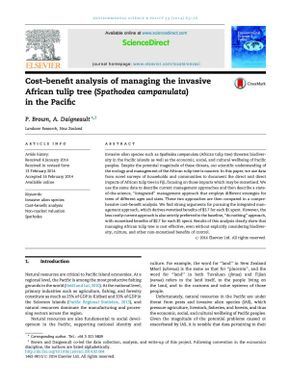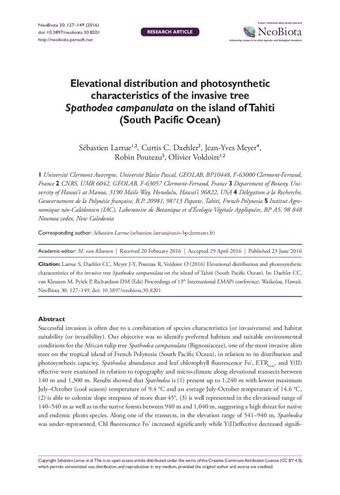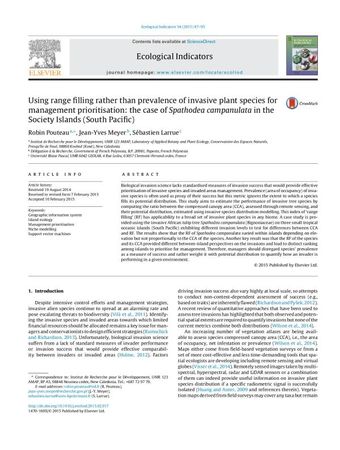Cost-benefit analysis of managing the invasive African tulip tree (Spathodea campanulata) in the Pacific
- Description:
- Invasive alien species such as Spathodea campanulata (African tulip tree) threaten biodiversity in the Pacific islands as well as the economic, social, and cultural wellbeing of Pacific peoples. Despite the potential magnitude of these threats, our scientific understanding of the ecology and management of the African tulip tree is nascent. In this paper, we use data from novel surveys of households and communities to document the direct and direct impacts of African tulip tree in Fiji, focusing on those impacts which may be monetised. We use the same data to describe current management approaches and then describe a state-of-the-science, integrated management approach that employs different strategies for trees of different ages and sizes. These two approaches are then compared in a comprehensive costbenefit analysis. We find strong arguments for pursuing the integrated management approach, which derives monetised benefits of $3.7 for each $1 spent. However, the less costly current approach is also strictly preferred to the baseline, do nothing approach, with monetised benefits of $2.7 for each $1 spent. Results of this analysis clearly show that managing African tulip tree is cost effective, even without explicitly considering biodiversity, culture, and other non-monetised benefits of control.
- Display date:
- 2014
- Collections:
- Secretariat of the Pacific Regional Environment Programme (SPREP)
- Publisher:
- Elsevier
- Content partner:
- Secretariat of the Pacific Regional Environment Programme (SPREP)
- Availability:
- Not specified
-
Copyright status: All rights reservedFind out more about what you are able to do with this itemThis item is all rights reserved, with means you'll have to get permission from Secretariat of the Pacific Regional Environment Programme (SPREP) before using it. For more information, please see our use and reuse page.What can I do with this item?Non-infringing useNZ copyright law does not prevent every use of a copyright work, and this item may be hosted by an international institute or organisation. You should consider what you can and cannot do with a copyright work.No sharingYou may not copy and/or share this item with others without further permission. This includes posting it on your blog, using it in a presentation, or any other public use.No modifyingYou are not allowed to adapt or remix this item into any other works.No commercial useYou may not use this item commercially.
Related items
Welcome and warm Pasifik greetings
The information on this site has been gathered from our content partners.
The names, terms, and labels that we present on the site may contain images or voices of deceased persons and may also reflect the bias, norms, and perspective of the period of time in which they were created. We accept that these may not be appropriate today.
If you have any concerns or questions about an item, please contact us.



